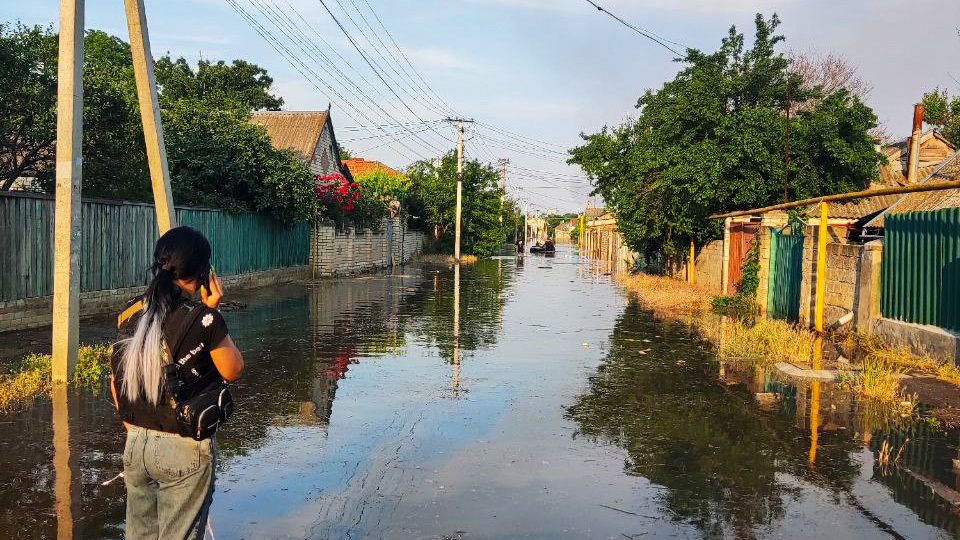Rescuing animals during disasters – Europe
save human lives by saving animals before, during and after disastersdestruction of Ukraine’s biggest dam impacts the environment
destruction of Ukraine’s biggest dam impacts the environment

(Kyiv, 6 June 2023) – Early in the morning, the biggest dam in Ukraine was blown up. The dam is the biggest water reservoir in terms of volume and located at a hydro-electric power plant (Kakhovska HPP) on the Dnipro river in the southern Kherson region. The dam is in the Russian-occupied town of Nova Kakhovka.
The dam destruction is expected to affect wildlife in different ways. Massive flooding below the dam immediately destroys and impacts human infrastructure, such as bridges and houses. Current modeling shows that flooding could continue for up to 5 days, so it will damage the habitat of local species – though we expect the animals to come back to the area after the floods are over.
For community animals and wild animals in captivity, the situation is dire. “Evacuation protocols rarely include the possibility for pets and farm animals to be evacuated along with their owners,” says Natalia Gozak, IFAW’s Wildlife Rescue Field Officer in Ukraine. “We have already received information that neighboring shelters are overwhelmed with rescue requests. In Nova Kakhovka, in occupied territory, a small zoo was totally flooded – all animals except their swans died today.”
The major drop of the water level above the dam will likely lead to a shortage in drinking water for communities and animals that rely on the Kakhovsky reservoir as their main water source. The shortage of water for irrigating agricultural land can lead to desertification and even the return of the natural steppe ecosystems, or could mean agriculture will be restored using alternative water sources. The drop in water level affects at least three regions in Ukraine, potentially changing those habitats and thus impacting local biodiversity.
In addition, large areas that were previously covered with water, will now dry up. “Rotting biomass of water flora and fauna will change into dryland or even desert within the next months,” Gozak continues. This will affect microclimates and thus cause temperature shifts. Wind erosion will blow sand and soil all over neighboring areas, impacting both people and nature. Moreover, near-water ecosystems will now be much further removed from water, and could disappear and change into more grassland and dry ecosystems in the south of Ukraine. Again, changing habitats for a wide range of wild animal species.
“In the long run, we expect nature will probably bounce back to most of its historic boundaries,” says Gozak. “But the continued destruction of infrastructure and the pressure on water supply could even see a wave of new climate and water migrants in other parts of Ukraine and in Europe.”
For more information or to arrange interviews, please contact:
Senior Communications Manager
Annelyn Close
m: +31 6 3900 8592
e: aclose@ifaw.org
Note:
In July, IFAW (International Fund for Animal Welfare) will organize a conference together with IBF ‘Save Wild’, Domazhyr Bear Sanctuary and the Ukrainian Center for the Bats Rehabilitation. The conference aims to help rehabilitation centers and initiatives in Ukraine to introduce better animal welfare standards for wild animals kept in captivity.
Related content
Every problem has a solution, every solution needs support.
The problems we face are urgent, complicated, and resistant to change. Real solutions demand creativity, hard work and involvement from people like you.